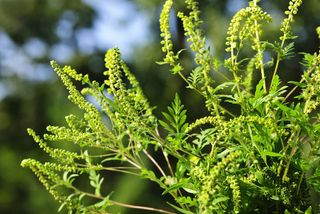Predicted 'Pollen Vortex' Didn't Happen After All

The long, harsh winter at the start of 2014 led some experts to predict that the cold season's "polar vortex" would turn into a "pollen vortex" during the warmer parts of the year, with a massive pollen eruption and a brutal allergy season.
But now, a Canadian study has found that the prediction didn't come true, at least not everywhere.
"Our results showed the reported pollen burst failed to materialize last spring," study leader James Anderson, who researches pollen and airborne particles at the London Health Sciences Centre in Ontario, said in a statement. In the study, the researchers looked at pollen counts in Ontario.
"Specifically, pollen levels of maple, juniper, birch, ash, mulberry and walnut were as much as four to five times lower than the average. The other tree pollen counts were within normal range," Anderson said. The findings will be presented this week at the American College of Allergy, Asthma and Immunology (ACAAI) meeting in Atlanta.
The thinking behind the "pollen vortex" prediction was that the prolonged freezing temperatures during last winter could delay the blooming of some trees. As a result, trees and grasses that normally bloom at different times over the course of the spring season would all bloom at the same time, causing a dramatic rise in pollen. [8 Ways Global Warming is Already Changing the World]
But in Atlanta, pollen counts were actually higher in 2013 than in 2014, said Dr. Stanley Fineman, an allergist and past president of the ACAAI. However, there were more days with very high pollen counts in 2014, he noted.
"People think every allergy season is the worst," Fineman said. "Clinically, there is no such thing as a 'pollen vortex,'" he said.
Sign up for the Live Science daily newsletter now
Get the world’s most fascinating discoveries delivered straight to your inbox.
About 8 percent of U.S. adults suffer from seasonal allergies, according to the Centers for Disease Control and Prevention. In people with these allergies, pollen causes symptoms such as stuffy and runny noses, watery and itchy eyes, sneezing, and wheezing. Allergies may flare up on days with high pollen counts.
Some studies have suggested that the severity of each year's allergy season may depend on a combination of factors, such as temperatures, the amount of precipitation and the extent of flowering grasses in an area that year. Other studies have predicted that, because of warmer climates and longer blooming seasons, pollen counts may even double in just a few decades in the United States.
Email Bahar Gholipour. Follow Live Science @livescience, Facebook & Google+. Originally published on Live Science.

